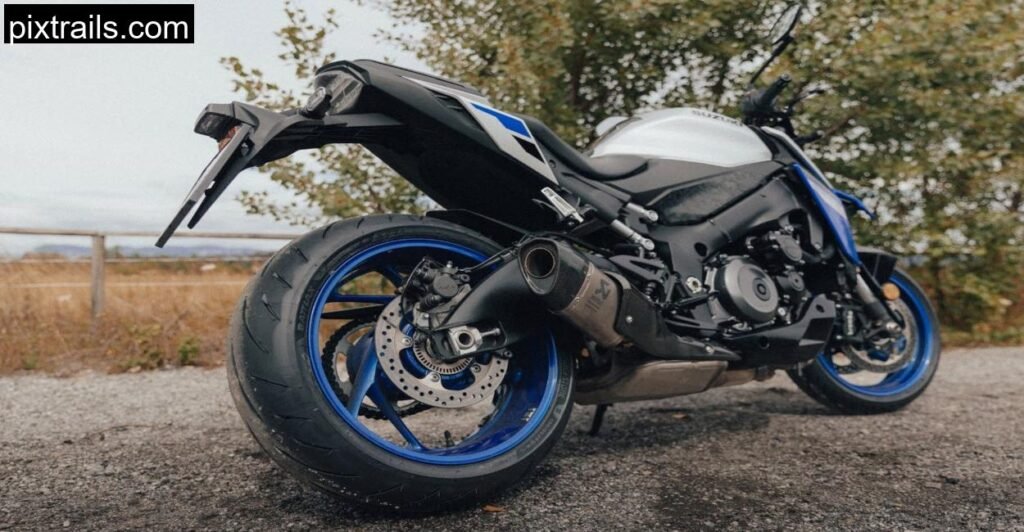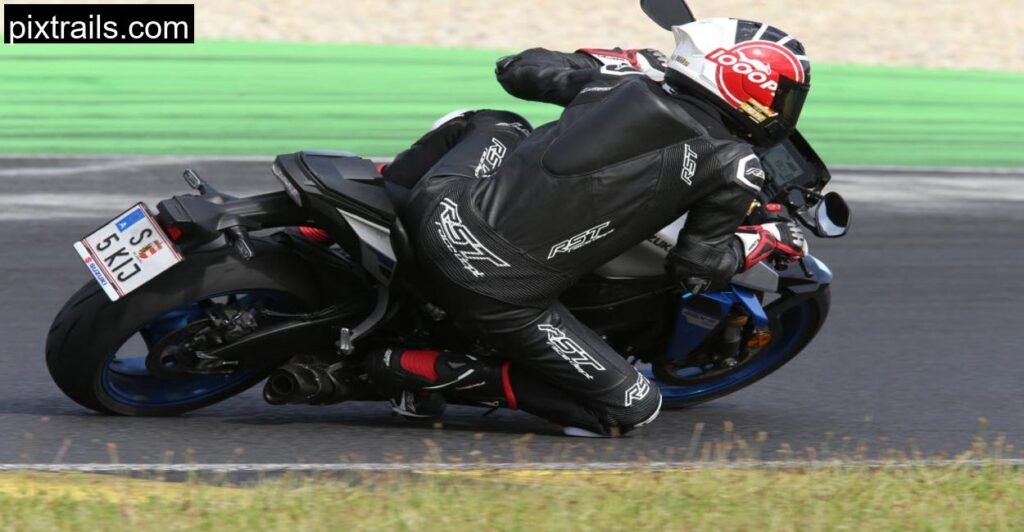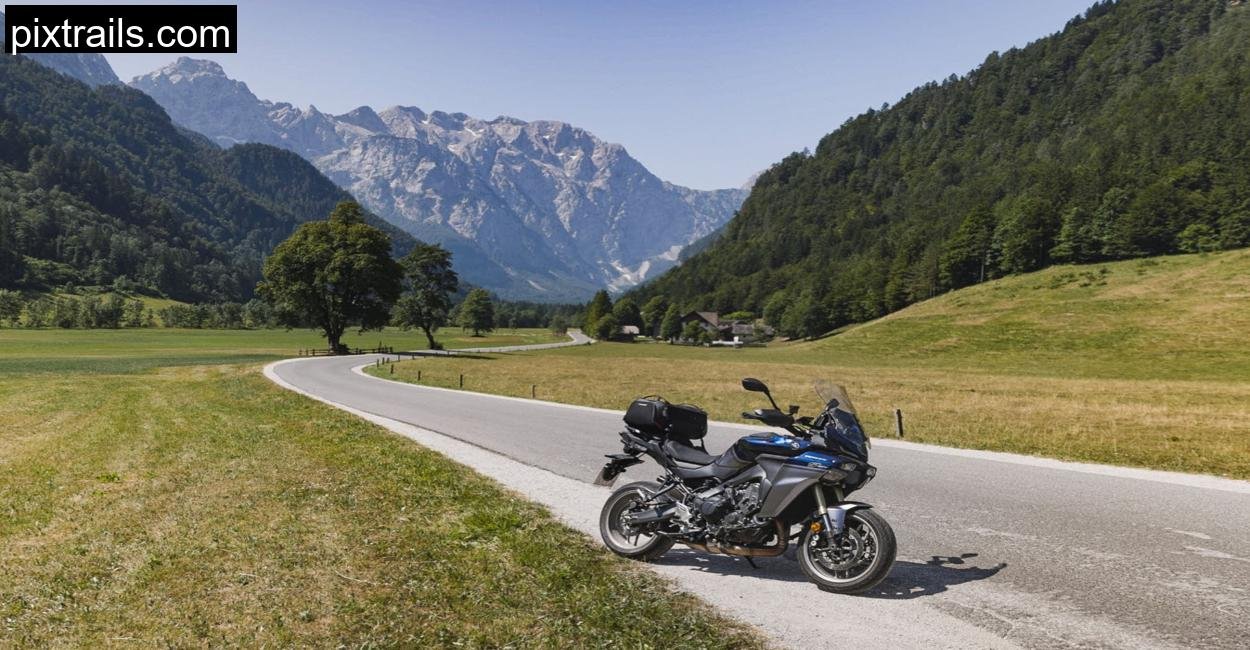The early sun in Trentino was just starting to rise over the rugged Dolomite peaks, painting the slopes in soft orange and gold. The mountain air had that crisp, clean bite that wakes you up better than any espresso. I was already suited up, helmet in hand, boots laced tight, and eyes locked on a shape that was about to be my partner for the day, the 2026 Suzuki GSX-S1000.
It stood there in the paddock like a coiled samurai, calm, composed, almost polite. The metallic blue paint gleamed under the morning light, and the sharp lines of its bodywork caught the sun like a katana edge. But I knew enough about this machine to understand that beneath its well-mannered exterior was something far more dangerous. This wasn’t just another naked bike; it was a streetfighter born from supersport blood, carrying the DNA of the legendary GSX-R1000.
Today, I wasn’t just here to look at it. I was here to feel it, to let it loose on a closed section of winding mountain roads and a local Trentino track layout designed for high-speed testing. And I had no doubt it would make me forget about everything else in my world for the next few hours.
First Encounter: The Gentleman Fighter
Swinging a leg over the GSX-S1000, I was reminded that Suzuki builds motorcycles that feel natural from the first second. The 810 mm seat height put me in a confident position, upright but leaning just enough to hint at the bike’s sporty nature. The wide bars gave me leverage, and the footpegs struck that middle ground between comfort and aggression.
The 5-inch TFT display was crisp and easy to read, showing me three ride modes, a gear indicator, fuel range, and traction control settings. Suzuki doesn’t bury you in endless menus; everything was a quick glance away. I toggled through the modes, settling on Mode B for the warm-up, enough performance to play with, but not as snappy as Mode A’s razor-sharp throttle.
The moment I thumbed the starter, the 999 cc inline-four barked to life. Smooth, almost silky, but with an underlying growl that told me it could bare its teeth at any time. This engine wasn’t just about numbers, 152 hp at 11,000 rpm and 106 Nm at 9,250 rpm, it was about how that power reached the rear wheel. And Suzuki has nailed that delivery with a quickshifter and blipper that felt as intuitive as breathing.
The Engine: An Axis of Happiness

I’ll call it what it is, the connection between throttle, gearbox, and rear tire on this bike is pure joy. In the lower revs, it’s almost too easy-going, letting you roll through town without a hint of drama. But once you pass 7,000 rpm, the GSX-S1000 wakes up. The induction noise deepens, the exhaust note sharpens, and the bike rockets forward in a rush that’s addictive.
The quickshifter made every upshift seamless, and the blipper on downshifts perfectly matched revs, making me feel like a pro racer even though I was just enjoying a spirited mountain climb. On the open straights of the Trentino track section, I pushed it to the redline, and it never once felt strained. This engine doesn’t shout for attention, it simply delivers, again and again, without breaking a sweat.
Handling in the Mountains and on Track
The Trentino loop we used for testing had everything, tight hairpins, flowing sweepers, and a few long straights that begged for full throttle. The fully adjustable KYB USD fork up front and adjustable rear monoshock handled it all with composure. Out of the crate, the setup leaned towards comfort, but with a few clicks of preload and damping adjustment, it firmed up beautifully for aggressive cornering.
Through fast left-right transitions, the GSX-S1000 felt planted and stable. The 1460 mm wheelbase struck a sweet balance, it was long enough for high-speed stability, yet short enough to let me flick it into corners without wrestling.
On the racetrack section, I discovered its true character. It didn’t feel like a pure race bike, you can sense the naked-bike DNA in the wind buffeting and the slightly softer seat, but it still carved through corners with accuracy. The Bridgestone S23 tires were a revelation, gripping the tarmac with the confidence of a full race compound, yet just days before they had handled wet roads without complaint.
Braking: Where the Gentleman Shows Restraint

Up front, Brembo radial calipers and 310 mm discs delivered strong, predictable stopping power. For spirited road riding, they were more than enough, progressive, with great feel at the lever. But on the track, I did wish for the instant bite you get from supersport setups. The ABS, tuned for road use, was a touch conservative for high-speed track braking, and without a 6-axis IMU, there’s no cornering ABS here.
That’s not necessarily a bad thing, it means fewer electronic layers between you and the road. But for riders used to full electronic safety nets, it might feel old-school.
Living with the GSX-S1000
Off the track and away from the mountains, the Suzuki settled into a surprisingly comfortable daily role. The seat, while a bit soft for track precision, was a blessing for longer stints on open roads. The 19-liter fuel tank gave me decent range, and at an average of 6.1 liters per 100 km, it wasn’t thirsty for a liter-class bike.
The riding position didn’t punish my wrists or back, and the mirrors actually showed me more than my elbows, a rarity in the naked class. The build quality felt solid, with neat welds, clean paint, and tight panel gaps. And while it may not have the gadget overload of some competitors, everything it has works flawlessly.
Technical Specifications
All specs in this article are directly sourced from the official Suzuki’s website. Information reflects the manufacturer’s most recent published figures.
| Specification | Details |
| Engine Type | 999 cc inline-four, 4-stroke |
| Power | 152 hp @ 11,000 rpm |
| Torque | 106 Nm @ 9,250 rpm |
| Gearbox | 6-speed with quickshifter & blipper |
| Frame | Aluminum bridge frame |
| Front Suspension | KYB USD fork, fully adjustable |
| Rear Suspension | Monoshock, fully adjustable |
| Brakes | Front: 310 mm dual discs, Brembo radial calipers; Rear: single disc |
| Wheelbase | 1460 mm |
| Seat Height | 810 mm |
| Fuel Tank | 19 liters |
| Weight (Ready to ride) | 214 kg |
| Tires | Bridgestone S23 |
| Electronics | 3 ride modes, traction control, ABS |
Competitors and Character
In the naked liter bike battlefield, the GSX-S1000 takes a very particular stance. The KTM 1290 Super Duke R is louder, wilder, and more aggressive, but it’s also more demanding. The Yamaha MT-10 brings drama with its crossplane growl, but not everyone wants that constant attention-seeking behavior. BMW’s S 1000 R is loaded with tech and power, but comes at a premium. The Honda Hornet 1000 SP is its closest rival, offering a slightly sharper brake setup but lacking some of the Suzuki’s chassis poise.
The GSX-S1000 doesn’t try to win by excess. It wins by being the kind of bike you actually want to ride every day, and still look forward to on weekends.
Conclusion
By the time the sun dipped behind the Dolomites, I was sitting on the pit wall, helmet off, just watching the GSX-S1000 cooling quietly. My leathers were dusty, my gloves worn in from hours of riding, and my mind was replaying every corner, every shift, every hard drive out of the apex.
The Suzuki had done something rare, it reminded me why I fell in love with riding in the first place. Not because of extreme horsepower figures, or endless riding modes, or bragging rights. But because of the simple, honest joy of a well-built motorcycle that wants nothing more than to make every ride feel like an event.
It’s not the most extreme naked bike out there. It doesn’t want to be. It’s the one that will still be sitting in your garage after years of ownership, starting every time, and making you smile every ride. And that, in my book, makes it a samurai worth respecting.
Is the Suzuki GSX-S1000 suitable for beginners?
Not really. While it’s forgiving in lower revs, the power and weight are better suited to experienced riders.
Does Suzuki GSX-S1000 have cornering ABS?
No. It has conventional ABS, tuned for road use, without a 6-axis IMU.
How does Suzuki GSX-S1000 perform on long rides?
Very well. The riding position is comfortable, the seat is soft, and the 19-liter tank allows for solid touring range.










